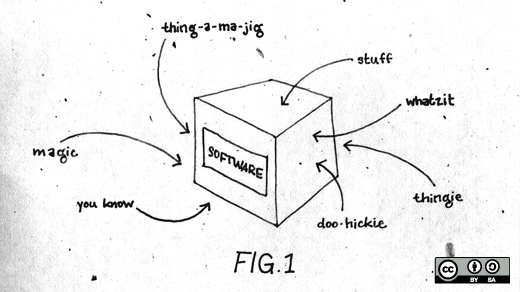Reflecting on the GPLv3 license for its 11th anniversary
In Summary : Get an insider's a look at the background negotiations leading up to GPLv3 and its lasting contributions to free and open...
https://updatesinfosec.blogspot.com/2018/07/reflecting-on-gplv3-license-for-its.html
In Summary :
Get an insider's a look at the background negotiations leading up to GPLv3 and its lasting contributions to free and open source software.
Last year, I missed the opportunity to write about the 10th anniversary of GPLv3, the third version of the GNU General Public License. GPLv3 was officially released by the Free Software Foundation (FSF) on June 29, 2007—better known in technology history as the date Apple launched the iPhone. Now, one year later, I feel some retrospection on GPLv3 is due. For me, much of what is interesting about GPLv3 goes back somewhat further than 11 years, to the public drafting process in which I was an active participant.
In 2005, following nearly a decade of enthusiastic self-immersion in free software, yet having had little open source legal experience to speak of, I was hired by Eben Moglen to join the Software Freedom Law Center as counsel. SFLC was then outside counsel to the FSF, and my role was conceived as focusing on the incipient public phase of the GPLv3 drafting process. This opportunity rescued me from a previous career turn that I had found rather dissatisfying. Free and open source software (FOSS) legal matters would come to be my new specialty, one that I found fascinating, gratifying, and intellectually rewarding. My work at SFLC, and particularly the trial by fire that was my work on GPLv3, served as my on-the-job training.
GPLv3 must be understood as the product of an earlier era of FOSS, the contours of which may be difficult for some to imagine today. By the beginning of the public drafting process in 2006, Linux and open source were no longer practically synonymous, as they might have been for casual observers several years earlier, but the connection was much closer than it is now. [...]
kindly refer the following link as follow up :
https://opensource.com/article/18/6/gplv3-anniversary

Get an insider's a look at the background negotiations leading up to GPLv3 and its lasting contributions to free and open source software.
Last year, I missed the opportunity to write about the 10th anniversary of GPLv3, the third version of the GNU General Public License. GPLv3 was officially released by the Free Software Foundation (FSF) on June 29, 2007—better known in technology history as the date Apple launched the iPhone. Now, one year later, I feel some retrospection on GPLv3 is due. For me, much of what is interesting about GPLv3 goes back somewhat further than 11 years, to the public drafting process in which I was an active participant.
In 2005, following nearly a decade of enthusiastic self-immersion in free software, yet having had little open source legal experience to speak of, I was hired by Eben Moglen to join the Software Freedom Law Center as counsel. SFLC was then outside counsel to the FSF, and my role was conceived as focusing on the incipient public phase of the GPLv3 drafting process. This opportunity rescued me from a previous career turn that I had found rather dissatisfying. Free and open source software (FOSS) legal matters would come to be my new specialty, one that I found fascinating, gratifying, and intellectually rewarding. My work at SFLC, and particularly the trial by fire that was my work on GPLv3, served as my on-the-job training.
GPLv3 must be understood as the product of an earlier era of FOSS, the contours of which may be difficult for some to imagine today. By the beginning of the public drafting process in 2006, Linux and open source were no longer practically synonymous, as they might have been for casual observers several years earlier, but the connection was much closer than it is now. [...]
kindly refer the following link as follow up :
https://opensource.com/article/18/6/gplv3-anniversary
